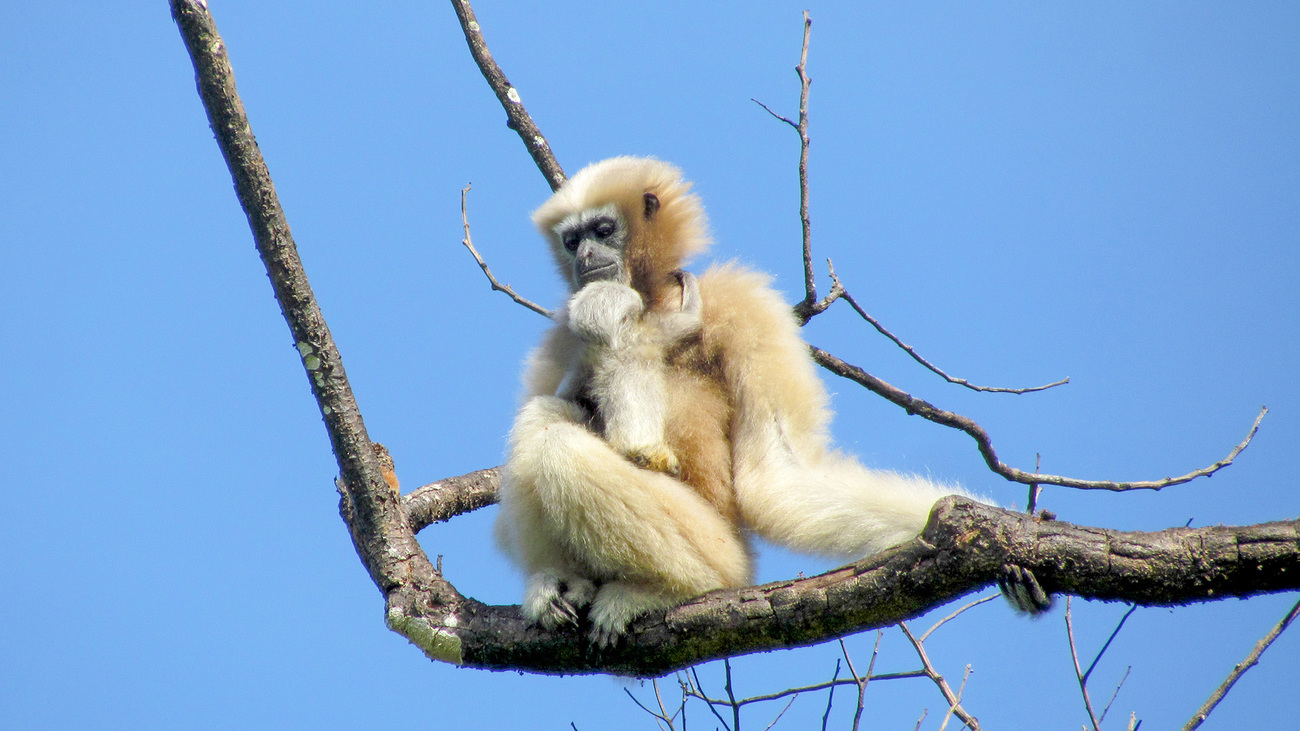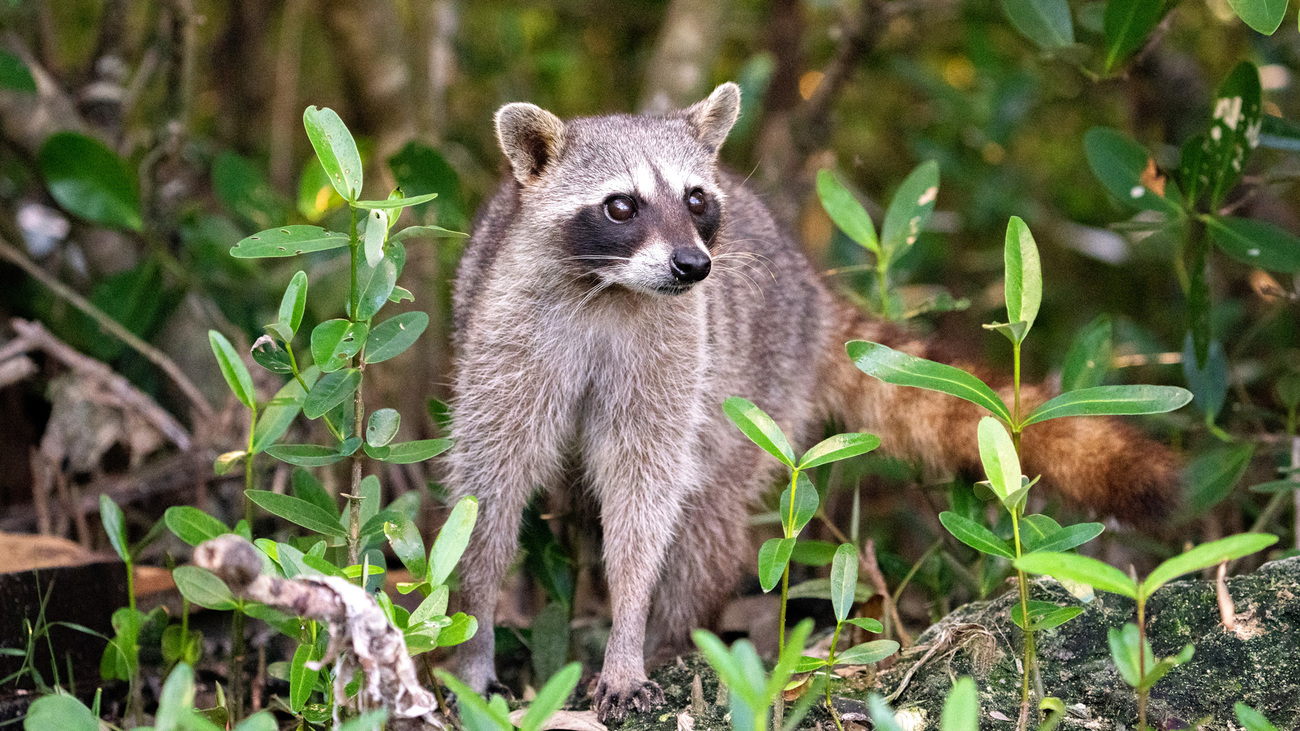Blog
Discover the four layers of the forest—and the animals living in it
Read moreMeet 17 of the world’s most endangered mammals
The world’s most endangered animals include about 4,000 critically endangered species that face threats so severe they’re close to becoming extinct. Worldwide, there are 550 mammal species classed as endangered and 235 as critically endangered, as of 2024.
These are 17 of the most critically endangered mammals on the planet, who are struggling to survive amidst habitat loss, poaching, and other threats to their existence.

Gibbons, also known as lesser apes, are facing dire threats to their existence, primarily due to habitat loss and illegal wildlife trade. Deforestation, driven by logging, agriculture, and infrastructure development, has decimated their tropical forest homes across Southeast Asia. As forests disappear, gibbons lose their sources of food and shelter.
The endangered gibbon species include the black-crested, Hainan black-crested, northern white-cheeked, and eastern black-crested gibbons. In fact, only about 30 Hainan black-crested gibbons remain in the world.
Gibbon populations are also heavily impacted by illegal wildlife trade, as they are often captured and sold as exotic pets. Gibbons should not be kept as pets, and conservationists in Asia are working to eradicate this practice, disrupting online wildlife trafficking networks and lobbying for stricter regulations.
This subspecies of chimpanzee has been listed as critically endangered since 2016. The population of these chimps is heavily fragmented across Africa, making it hard to quantify the number of western chimpanzees left in the wild.
Western chimpanzees are a fascinating subspecies and have been observed crafting wooden spears to hunt down other primates, cracking open nuts with rocks, and playing in pools on hot days.
Their dwindling population faces daily threats from poachers and deforestation. The exotic pet trade also impacts western chimpanzees—for every baby chimpanzee that becomes a pet, it is estimated that 10 are killed in the process.
IFAW works with partners around the world to combat wildlife trafficking and rescue chimpanzees and other animals from the exotic pet trade.

Listed as critically endangered on the IUCN red list, there are believed to only be 100-200 mature individual Dama gazelles left in the wild. This species of gazelle is found in small pockets of savannah across northern Africa, though it is extremely rare to spot one in the wild.
The main threat this species faces is habitat destruction caused by the overgrazing of domestic livestock. They also are hunted by nomadic peoples, which can be challenging for local governments to properly regulate.
Also known as a grey ox or forest ox, the kouprey is one of the most endangered mammals in the world. They are considered critically endangered or possibly extinct, with between zero and 50 mature individuals left in the wild. Inhabiting the wild areas of Cambodia and Laos, the other kouprey populations across Asia—including those in Thailand and Vietnam—have been completely wiped out.
The biggest threat the kouprey faces is habitat loss, as logging and agricultural expansion decimate the areas they call home. Additionally, poaching and hunting for their meat and horns have further decimated their population.
Conservation efforts have been challenging due to the kouprey’s elusive nature and the remote regions they inhabit, though organisations are working to protect natural habitats and outlaw poaching.

Baiji are thought to be the first dolphin species driven to extinction due to human impact.
A freshwater dolphin species native to the Yangtze River system in China, their population is severely fragmented, so it is difficult to estimate numbers in the wild. The last baiji recorded in the wild was in 2001, despite a full-scale search for more in 2016. The IUCN classes them as critically endangered.
Unsustainable fishing practices in China are likely the prime cause of the steep decline seen by baiji populations, along with general habitat degradation.
IFAW is heavily involved in dolphin rescue and conservation worldwide, with hopes that no other dolphin species end up following in the footsteps of the possibly extinct baiji.
The main threats to critically endangered wild Bactrian camels are poaching and climate change, with only around 950 mature individuals left alive in the desert areas of northern China and Mongolia.
Due to drought in the area, the number of oases—the only water source for these wild camels—is declining rapidly, causing swift population loss. The remaining habitat in Mongolia is also degraded by domestic livestock, as agricultural practices increase and camels face more competition for food and water.

The North Atlantic right whale is critically endangered. The population currently sits at about 370 individuals, only 70 of which are reproductive females. The majority of this population decline can be attributed to human actions.
Ocean noise pollution, commercial fishing practices, shipping lanes, and climate change are all threats to North Atlantic right whales.
IFAW is dedicated to saving North Atlantic right whales from extinction. Small changes, like slower shipping speeds, changes to fishing technology, broader climate education, and ocean noise reduction are all part of our daily work to save this species.
Also known as the white antelope or screwhorn antelope, the addax is an antelope species found in the Sahara Desert. The IUCN classes addax as critically endangered and reports that there are only 30 to 90 individuals remaining in the wild.
The driving force behind the addax’s decline is uncontrolled hunting. In addition, ongoing drought and increased human presence in addax habitat threaten their survival as a species.

Though Australia is teeming with kangaroos, this specific species is found only in a tiny, forested region of Papua New Guinea. Classed by the IUCN as critically endangered, there are thought to be only around 500 mature individuals in the wild.
Widespread deforestation of the region for agriculture and logging has eroded their native rainforest homes, reducing their available habitats and food sources.
Additionally, hunting for their meat by locals for sustenance poses a significant threat.
Local community organisations collaborate to protect these kangaroos’ habitats, but more must be done internationally to save the species from extinction.
The single-striped opossum, also known as the one-striped opossum, is classed as critically endangered and considered possibly extinct. It is believed there are only two to 10 single-striped opossums left in the wild—only two encounters have ever been recorded.
Found in central South America, urbanisation, agricultural expansion, and deforestation have diminished their forest habitats, isolating populations and limiting their access to food and ability to find mates. Climate change makes them even more vulnerable by altering their ecosystems.
Efforts to protect single-striped opossums are similar to efforts for other small mammals living in the forests of South America—establishing wildlife corridors to connect isolated populations, preserving remaining forested areas, and supporting sustainable land use practices among local communities.

The red wolf is classed by the IUCN as critically endangered, with only 20 or 30 mature red wolves remaining in the wild. Today, they are found only in a small area of coastal North Carolina.
Along with other wolves living in North America, they’re constantly threatened by humans who are afraid of living near wolves—despite wolf attacks being incredibly rare.
In both Canada and the US, IFAW is supporting legislation and regulations to help protect wolves threatened by commercial and personal hunting practices.
Cheetahs are not obscure animals, but multiple cheetah subspecies face extinction. There are around 6,000 total cheetahs left in the wild. Two critically endangered subspecies, the Northwest African Cheetah and the Asiatic Cheetah, are mainly threatened by wildlife crime.
In the Horn of Africa, cheetahs are illegally trafficked for the exotic pet trade. Other threats to cheetahs include habitat fragmentation and human-wildlife conflict.
Though their population is spread across the European continent, this mink species is listed as critically endangered because they face extreme habitat loss and overhunting. European minks have gone extinct in most of their former range.
Wetland drainage and pollution has significantly reduced their suitable living areas, fragmenting populations. Initiatives to help preserve these small mammals include habitat restoration, captive breeding programs, and the eradication of invasive American minks from European mink habitats.
While bats live in many different habitats around the globe, 86 bat species are endangered and 25 are critically endangered, according to the IUCN. Furthermore, the gloomy tube-nosed bat, New Zealand greater short-tailed bat, montane monkey-faced bat, and Aru flying fox are all possibly extinct, with no recent sightings of them in the wild.
IFAW is passionate about preserving the remaining bat species and reversing their endangered status. In Australia, we’re rebuilding habitats for bats and other small mammals that have had their homes decimated by bushfires.
During the ongoing war in Ukraine, we’ve worked to help animals whose welfare is at risk. We formed a partnership with the Ukrainian Bat Rehabilitation Center to ensure they have the resources they need. Through this partnership, we rescued and relocated over 500 bats trapped underground and rehabilitated over 3,000 bats.

Also known as the pygmy racoon, there are only believed to be 192 Cozumel racoons left, all living on the Mexican island of Cozumel. Their biggest threats come from humans, through tourism and climate change.
As the island is a famous tourist destination, rapid development has left the racoons with limited space and resources. Most Cozumel racoon deaths come from being hit by cars on the island’s main roads.
Education and awareness campaigns also engage local communities and tourists in the raccoon’s conservation, hoping to protect their small remaining population.
African forest elephants are critically endangered primarily due to relentless poaching for their ivory tusks, fueled by the illegal ivory trade. Illicit hunting activities have increased since 2008, with poachers killing more African elephants than are being born.
Human-elephant conflicts also pose a serious threat and usually arise when elephants destroy farmers’ crops or get too close to human settlements.
Their presence significantly impacts the environment and wellbeing of other creatures because they dig for water, spread seeds, fell trees, and contribute to ecosystem regeneration.
That’s why the conservation of African forest elephants is vital. These include anti-poaching patrols, stronger law enforcement against the ivory trade, and efforts to reduce habitat destruction.

This species of marmot is found only on a small island off the coast of Canada, with only around 90 mature individuals left in the wild. They’re very social animals who live in burrows in the island’s sub-alpine meadows. As a critically endangered species, the main threats they face are climate change and logging.
Though freshly logged forest areas are initially attractive to the marmots, they provide inadequate shelter for the winter hibernation months, leaving them without a suitable habitat.
Additionally, climate change affects how much habitat is available to the marmots, as they need specific climate conditions to hibernate. They’re far more vulnerable to predators if they begin hibernation late or end early.
Most of these endangered mammals are in such a critical position because of human activity, so it’s up to us to save them. Read our blog to learn a few ways you can help endangered species in your everyday life.
Read more about these animals and how IFAW works to protect them around the world.
Learn how you can get involved and take action for animals by signing our petitions.
Every problem has a solution, every solution needs support.
The problems we face are urgent, complicated, and resistant to change. Real solutions demand creativity, hard work and involvement from people like you.
Unfortunately, the browser you use is outdated and does not allow you to display the site correctly. Please install any of the modern browsers, for example:
Google Chrome Firefox Safari